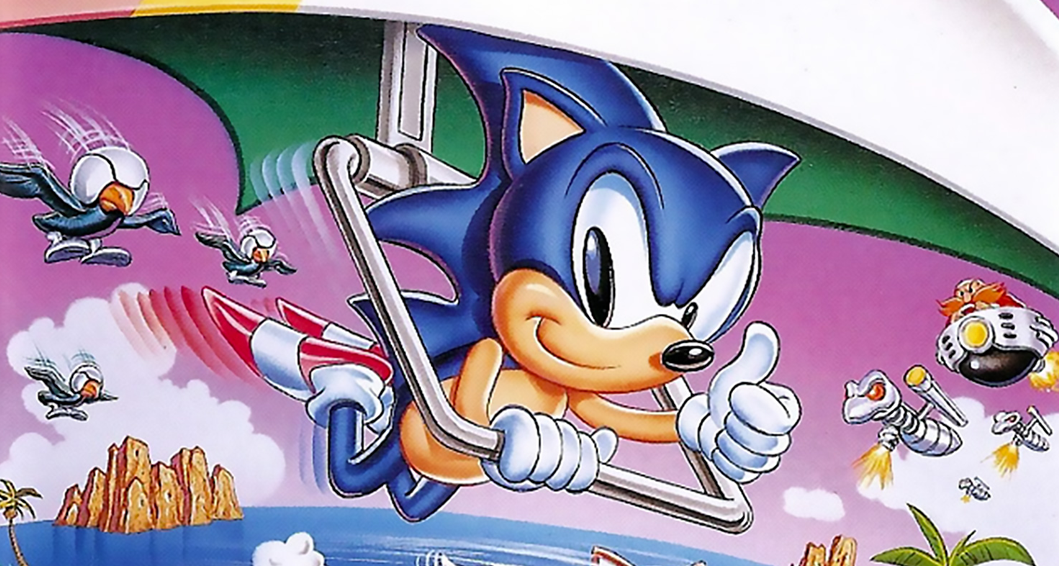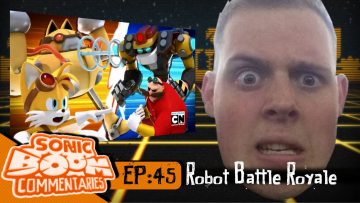
Island Art Showcases Lost Sonic 2 Time Travel Details
Kick around the Sonic Community and it won’t take long for you to hear the complicated story surrounding Sonic the Hedgehog 2. It was a historic collaboration between Sega of America and Sega of Japan, bursting with so many ideas that many (if not most) had to be left on the cutting room floor — or, at the very least, transferred to Sonic CD, which apparently started developed as sort of an enhanced port of Sonic 2, right?
But even with many work-in-progress prototypes and interviews with people who worked on the game, details remained tantalizingly fuzzy. Sonic 2 is more than 20 years old at this point, and for the American staff that worked on it, it was one project of many they touched in their careers. Memories became increasingly hard to come by.
New information has surfaced today dispelling some long-standing myths and further clarifying what, exactly, Sonic the Hedgehog 2 was originally supposed to be. This tweet by Gamasutra’s Brandon Sheffield shed some light:
Here are some un-used overworld maps (and zone names!) from sonic 2, courtesy of @Yasuharah pic.twitter.com/xniS56kbwj
— brandon sheffield (@necrosofty) May 22, 2017
These pictures say a lot. Though it might be easy to assume these are four different islands, considering we know Sonic 2 was to feature time travel in some form, this is clearly the same island in four different eras. Mountains stay in roughly the same locations, as do rivers, and the pyramid-shaped “Warp Point.” Actually, about that: game preservation activist Frank Cifaldi seems to think the “Warp Point” might be the fabled Hidden Palace Zone.
It also explains the placeholder “Genocide City” level name in the magazine preview ROM that was leaked.
— Frank Cifaldi (@frankcifaldi) May 22, 2017
Aquatic Ruins Zone looks like it was meant to straight up be Olympus in the past. That rules.
— Frank Cifaldi (@frankcifaldi) May 22, 2017
Cifaldi’s point about Hidden Palace Zone being the nexus of the game’s time travel mechanic seems to hold some water, given a second tweet from Sheffield about 15 minutes later:
Sonic 2 was originally going to have a time travel theme. at the time @Yasuharah didn’t know that @NaotoOhshima was also doing that with cd! pic.twitter.com/0euhFSDGis
— brandon sheffield (@necrosofty) May 22, 2017
Though the text on the right is cut off, it clearly seems to say “Sonic travels to ancient times, activating Hidden Palace.” We’ve known Hidden Palace was somehow central to Sonic 2’s plot — Yuji Naka has gone on record to say it’s where Sonic would have received the Super Sonic transformation after collecting the Chaos Emeralds. For it to also be relevant to Sonic 2’s time travel makes a certain amount of sense.
What’s most interesting next is Sheffield relaying the information that Sonic 2 and Sonic CD both were to feature time travel completely by coincidence. Sonic 2 was made in America, whereas Sonic CD was made more than 5,000 miles away in Japan. In the days before the modern internet, communication at that distance would be difficult. Instead, both games seemingly happened to land on a time travel mechanic completely independent of each other. Again, this was something we’ve kind of known; Naoto Ohshima had said a few years ago that Sonic CD was never intended to be a special version of Sonic 2, but really, that just lead to more confusion given some similar themes the two games share. As is always the case, finding out what you want to know is simply a matter of asking the right questions, something Brandon Sheffield has done (a 2009 interview he did with Ohshima can be found here).
The fallout from this is that it was long assumed that Sonic 2’s lost Dust Hill Zone was shuffled over to Sonic CD. After all, Sonic CD has its own lost level that seems to feature cacti, right? Again, it’s easy to think about this stuff in terms of the modern technology: you just copy the files from one computer to another and work resumes somewhere else. No, actually; again, Sonic 2 and Sonic CD likely happened to hit upon the same ideas despite the largest ocean separating them. Suddenly, cutting Christian Whitehead’s “Desert Dazzle” from his 2011 Sonic CD port doesn’t seem so outlandish — it was, after all, as much of a riff on Sonic 2’s missing Dust Hill Zone as anything else (both Dust Hill and Desert Dazzle now have a successor in Sonic Mania’s Mirage Saloon Zone).
This isn’t all. Yasuhara is apparently sitting on a treasure trove of this kind of information. All of this is part of a campaign by Sheffield to get Yasuhara to use his twitter account more, and Sheffield teases more concept art (this time from Sonic 1) in order to get users to coerce him into posting more.
@Yasuharah Trying to get @yasuharah more active on twitter: please RT if you’d like to see more of his design sketches, like these from before Sonic 1! pic.twitter.com/eqLhzFdvsR
— brandon sheffield (@necrosofty) May 22, 2017
If you aren’t entirely aware of who Hirokazu Yasuhara was, alongside Yuji Naka and Naoto Ohshima he was one of the founding fathers of the classic Sega Genesis Sonic games. Naka handled programming, Ohshima handled character designs, and Yasuhara was responsible for game and level design. Together, they defined the look and feel of Sonic 1, 2, 3 and Sonic & Knuckles. Yasuhara was among the first to leave Sonic Team, in 1994, after the completion of S&K. He hung around Sega until the 2000’s, where he then bounced around between Naughty Dog, Namco, and now, Nintendo.
If you’d like to see more, please don’t hesitate to follow Brandon Sheffield’s advice.






